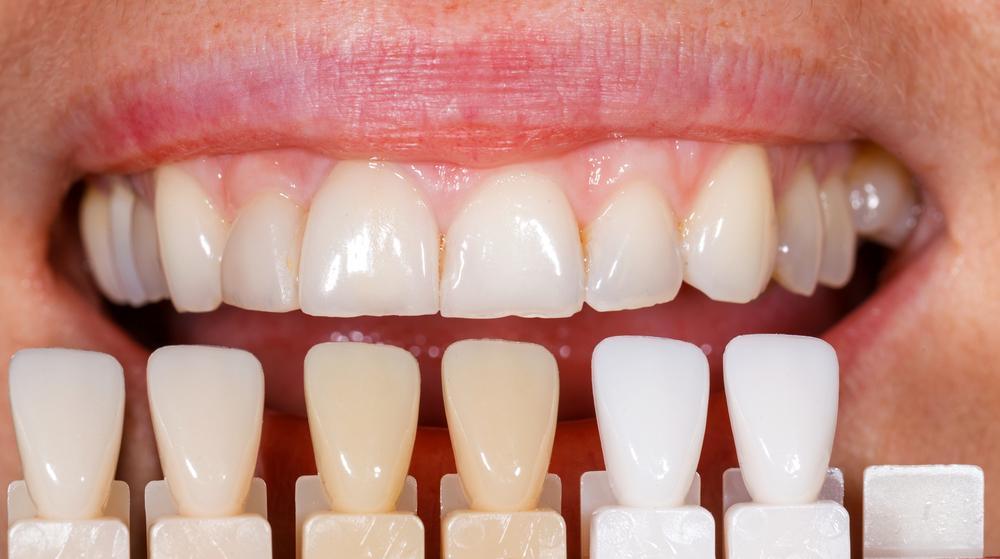
Dental veneers are ultra-thin covers that precisely match the color and shape of your original teeth. We recommend porcelain veneers most of the time because they are very stain- and chip-resistant and transparent like tooth enamel. Your porcelain veneers should endure for at least 15 years with proper dental hygiene.
Veneers may change your smile and offer you an immediate makeover, but they need careful preparation and a competent dentist for installation. In order to completely complete the preparation process, getting dental veneers often takes three visits to the dentist. After your third appointment, you’ll leave your dentist’s office with a smile you can be proud of.
While a veneer installation is a fairly straightforward process, there are still a few things you need to do to prep your teeth for the procedure. First and foremost, you’ll need to have a consultation with your dentist to discuss whether veneers are the right option for you. Once it’s been determined that veneers are the way to go, your dentist will then take impressions of your teeth in order to create custom-fitted veneers. Prepping your teeth before an installation is important as it saves you from the hassle of an ill-fitting installation.
Tips on Preparing for Veneer Placement
While you are considering a veneer installation in Michigan, here are a few things you can do to prepare for the placement procedure:
Choose the Right Dentist
When it comes to something as important as your teeth, you’ll want to make sure you’re in good hands. Do some research and find a reputable cosmetic dentist who has experience placing veneers, and make sure you go with the best and not necessarily the cheapest. Many people have discovered the hard way that cheaper does not always imply the best. When you review Pinnacle Dental, you will discover you need not research further.
Have Realistic Expectations
Veneers can definitely transform your smile, but they’re not going to be a perfect solution for everyone. Before getting veneers, talk to your dentist about what you can expect from the procedure and whether veneers are the right option for you.
Schedule Regular Checkups
Be sure to see your dentist for regular checkups and cleanings, even if you’re not experiencing any problems with your veneers. Checkups help ensure that your veneers last for many years.
Be Prepared for some Discomfort
The placement of veneers is a dental procedure, so you can expect some discomfort during and after the procedure. Be sure to take pain medication as prescribed by your dentist.
Follow your Dentist’s Instructions
After your veneers are placed, it’s important to follow your dentist’s instructions for care and maintenance. This includes avoiding foods that can damage the veneers, such as hard candy or nuts. Also, remember to direct all of your questions to the dentist rather than seeking self-help.
Veneer Installation Procedure
There are certain steps the dentist follows carefully during veneer installation to ensure you get the best installation and to ensure proper functioning of your veneers. [1]
Planned Diagnosis and Therapy
At this stage, you communicate to your dentist the end result you’re aiming for. At this session, your dentist will evaluate your teeth to determine whether or not dental veneers are a good option for you. He or she will also go through the procedure’s advantages and disadvantages. In addition to taking X-rays, they could also take imprints of your mouth and teeth.

Preparation
In order to prepare a tooth for a veneer, your dentist will reshape the tooth surface by an amount that is almost identical to the thickness of the veneer that will be put on the tooth surface. If the region is numbed before cutting the enamel, it will be up to you and your dentist to decide. A model, or imprint, of your tooth will then be created by your dentist. Your veneer is made using this model, which is delivered to a dental lab. The veneers’ return from the lab typically takes 2-4 weeks. In the meanwhile, you might use temporary dental veneers while waiting for the permanent ones to be installed.
Bonding
Before firmly attaching the veneer to your tooth, your dentist will first place it on your tooth to check its fit and color. He or she will then repeatedly remove and trim the veneer to obtain the right fit. The color of the veneer can be altered depending on the type of cement used. Your tooth will next be cleaned, polished, and etched in order to make it ready to receive the veneer. The tooth is made rougher by etching to promote a powerful bonding process. The veneer is then coated with a unique cement before being bonded to your tooth. Once the veneer is in the ideal position, your dentist will illuminate it with a special laser beam to activate chemicals in the cement and hasten the cement’s rapid hardening. The last stages entail scraping off any extra cement, inspecting your bite, and making any necessary modifications. In order to evaluate your gums and the placement of the veneer, your dentist might request that you come back for a follow-up appointment in a couple of weeks.
Possible Side Effects
While getting veneers installed on your teeth is a relatively simple and straightforward procedure, there are a few possible side effects that you should be aware of. [2] These include:
Gum irritation
You may also experience some gum irritation after getting veneers. This is because the veneers can irritate your gums when they rub against them. However, this irritation should also go away within a few days or weeks.
Sensitivity to hot and cold temperatures
You may find that your teeth are more sensitive to hot and cold temperatures after getting veneers. This is because the enamel on your teeth has been removed and the dentin is now exposed. However, this sensitivity should go away within a few days or weeks.
Chipping and breaking
Although veneers are made to be durable, they can still chip and break. This is most likely to happen if you bite your nails, use your teeth as tools, or chew on hard objects. Your dentist will give you a list of foods to avoid to minimize the risk of chipping or cracking your veneers.
Staining
Veneers can also stain over time. This is because they are porous and can absorb stains from food and drinks. To prevent this, you should avoid eating or drinking foods and beverages that are known to cause staining (such as coffee, tea, and red wine).
Plaque buildup
Plaque can also build up on veneers just like it does on natural teeth. Therefore, it’s important to brush and floss regularly to remove plaque and prevent gum disease.

Other Things To Note
Cost
Veneers in Michigan are generally more expensive than other types of dental restoration, such as bonding and crowns. The cost will also depend on the number of veneers you need and the dentist you visit. While the cost is well worth it, some people might consider getting cheaper alternatives.
Time commitment
A veneer installation will require some time commitment on your part to be done properly, unlike some dental procedures that require just a visit to the dentist.
Maintenance
You’ll need to take care of your veneers just like you would your natural teeth. Brush twice a day, floss daily, and see your dentist regularly for cleanings and checkups. Maintenance is critical to the longevity of your veneers.
Aftercare after Veneer Installation
It is important to take care of your veneers after they have been installed. This means brushing and flossing twice a day and being careful about what you eat and drink. You should also avoid biting or chewing on hard objects, as this can damage the veneers. Also, always refer back to your dentist if you notice any changes in the color or shape of your veneers. Regular dental checkups are still important, even if you have veneers. And lastly, don’t forget to schedule appointments for professional cleanings!
Your dentist is in the best position to give you specific instructions on how to care for your veneers, so be sure to follow their advice carefully so as to ensure that your veneers serve you for a long time and also function as they should.

Frequently Asked Questions
How do I prepare for dental veneers?
The first step is to schedule a consultation with your dentist to see if veneers are right for you. During the consultation, your dentist will examine your teeth and discuss your goals for treatment. They will also take X-rays and impressions of your teeth, which will be used to create the veneers. If you decide to move forward with treatment, your dentist will then prepare your teeth for the veneers. This involves removing a thin layer of enamel from the tooth surface to make room for the veneer. Once your teeth are prepared, the veneers will be custom-made to fit your teeth.
How long does it take to prep for veneers?
The preparation process for veneers typically takes one to two visits. During the first visit, your dentist will evaluate your teeth and mouth to make sure veneers are right for you. They will also take X-rays and impressions of your teeth. These impressions will be used to make custom veneers that fit your mouth.
Do you brush your veneers?
Yes, you should brush your veneers just as you would your natural teeth. Be sure to use a gentle toothbrush and toothpaste. You may also want to use a floss threader to help you floss around your veneers.
Is veneer preparation painful?
The only dental work necessary to prepare your teeth for veneers is the removal of a very thin layer of enamel. To guarantee a flawless fit, this enamel layer, which is identical in thickness to the veneer, is removed. The enamel layer is so thin that no pain is felt by the patient during this procedure, which could also be done under local anesthesia.
How long will your teeth hurt after veneers?
Your changed enamel may not be the cause of any sensitivity you feel in the days after having your veneers placed; it might just be a result of the surgery. Within a few days to a few weeks, the sensitivity subsides for the majority of people.
References
- Alothman Y, Bamasoud MS. The Success of Dental Veneers According To Preparation Design and Material Type. Open Access Maced J Med Sci. 2018 Dec 14;6(12):2402-2408. doi: 10.3889/oamjms.2018.353. PMID: 30607201; PMCID: PMC6311473. https://www.ncbi.nlm.nih.gov/pmc/articles/PMC6311473/
- Dentist over-prepared my teeth and veneers fall off. Beverly Institute of Dental Esthetics. https://cosmetic-dentistry.com/blog/dentist-over-prepared-teeth-veneers-fall-off.html
